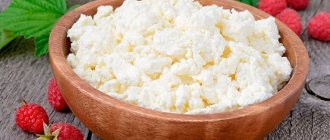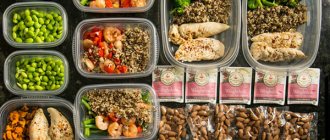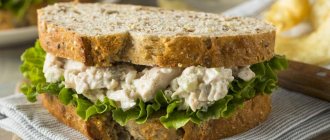| Minerals | mg per 100 g of product |
| Potassium | 146 |
| Calcium | 120 |
| Magnesium | 14 |
| Phosphorus | 90 |
| Fluorine | 0,02 |
| Zinc | 0,4 |
| Vitamins | mg per 100 g of product |
| Kholin | 23,6 |
| WITH | 1,5 |
| RR | 0,1 |
| Pantothenic acid | 0,38 |
| AT 2 | 0,15 |
| IN 1 | 0,04 |
| Beta carotene | 0,02 |
| A | 0,03 |
| E | 0,09 |
| Acids | g per 100 g of product |
| Oleic | 0,78 |
| Cholesterol | 0,01 |
| Linoleic | 0,09 |
| Linolenic | 0,03 |
The main ingredient of milk is calcium. It is difficult to overestimate its importance for athletes, among whom the incidence of injuries is much higher than among ordinary people. And it is the sufficient consumption of this mineral that protects many from possible fractures. Calcium also has other pleasant side effects. For example, maintaining training productivity at the proper level and helping fat burning during cutting.
To better absorb calcium, you should take vitamin D with milk.
And yet, from a nutritional point of view, cow's milk is a complex product. Its composition and calorie content depend on the health of the animal, its nutrition, even the month of the calendar, not to mention the methods of processing the drink. And there are more and more of them every day.
| Type of milk | Manufacturing technology | Product Features |
| Sterilization | One-time heating up to 120-1400C. | Complete disinfection. Increased resistance to lactic acid bacteria. |
| Pasteurization | Low temperature – heating up to 760C. High temperature - heating up to 77-1000C. | It has a specific taste and smell, but all the vitamins are preserved. Not all microbes can die during low-temperature processing. For example, the causative agent of tuberculosis is sensitive only to heat above 80-900C. |
| Ultrapasteurization (UHT treatment) | Heating milk with sterile steam to a temperature of 135-1450C, and maintaining it in this mode for several hours. | This is how 90% of milk in the US is processed. There are no vitamins in this milk, but it is completely sterile and free from germs. |
| Ghee | Heating to 85-1050C followed by holding for 15-30 minutes. | It has a creamy hue and a pronounced nutty taste. Few vitamins are retained. The causative agents of tuberculosis do not die. |
| Thermal | Heating to 60-680C followed by holding for half an hour. | The nutritional value of milk is not affected. Only some pathogenic microorganisms are destroyed. |
| Normalized | The cream is separated from whole milk, and the rest of the product is skimmed. And only then, under strict computer control, the cream is added back until the desired fat content is reached. | This milk is a godsend for those who count calories. But most nutritionists are of the opinion that the healthiest milk is the one that has undergone a minimum of technological intervention. |
| Refurbished | Powdered milk diluted with water. | Compared to the natural product, the nutritional value of reconstituted milk is greatly reduced. |
| Recombined | It can rather be called a dairy product than milk. Made from milk powder, water, cream, milk fat, condensed milk. | The quality, taste and usefulness of the product directly depend on the integrity of the manufacturer. In any case, recombined milk has no place in an athlete’s diet! |
| Lactose-free | The production process includes the stage of splitting lactose into glucose and galactolose. | Well digestible, reduced calorie content. At the same time, the taste of natural milk is preserved. |
The mineral components of the product are absolutely indifferent to high temperatures. Therefore, regardless of the type of processing, they are preserved in milk in their entirety.
Whole milk, or even better, fresh milk, has the greatest nutritional value. True, one point needs to be taken into account here: it is safe to use it only if you are confident in the health of the cow, the cleanliness of its keeping and compliance with the rules of milk yield. Otherwise, the risk of infection will be much greater than the benefit. Therefore, whole milk must be boiled!
Whole milk should be stored in the refrigerator in clean, sterilized containers. It is best if it has a narrow neck and is made of glass, clay or porcelain.
Contraindications and harms of milk
The main danger of cow's milk is its high allergenicity. Casein protein provokes a violent reaction in the body: if the product is poorly digested, for various reasons, it enters the bloodstream. And already here antigens attack him, trying to destroy the pathogen of calm.
The more often the collision occurs, the more pronounced the allergic reaction. Most often it is expressed by a small rash and itchy skin. As a result, the body generally stops accepting all dairy products. And if you continue to persist, it is possible that you will develop type I diabetes.
Another danger of milk is lactose or milk sugar. His intolerance or scientifically lactose deficiency is a common occurrence. And you can suspect something is wrong by the diarrhea that always occurs in response to a glass of milk. In this case, you shouldn’t persist either, because lactose intolerance is not at all as harmless as is commonly believed. She can:
- provoke the development of cellulite;
- lead to arthritis;
- start the process of clouding the lens of the eye (cataract).
Lactose-free milk has long been common. Yes, it is more expensive than natural. But it is absolutely safe for people with severe lactose intolerance.
Interestingly, cow's milk appeared in the human diet about 10 thousand years ago. And at first it was consumed only by young children, who in the first years of life produced an enzyme capable of breaking down lactose. Over time, as a result of gene mutations, this ability began to persist into adulthood. Today in the world, 50% of adults can drink milk without unpleasant consequences. Moreover, the majority of them are residents of the European continent, the minority are Asians, Africans and Australians.
But those athletes who have ever been diagnosed with kidney disease need to be the most careful. In some cases, drinking milk is strictly prohibited. And to answer the question whether or not you can diversify your diet, in this case only a doctor can.
Milk[edit | edit code]
Dairy products as a source of protein
Milk
has long been considered one of the best means for building muscle mass in bodybuilding. However, some athletes are allergic to lactose (the sugar in milk) or have a lack or absence of enzymes in their bodies that digest it. In this case, drink kefir, yogurt, eat cottage cheese and cheese, i.e. those dairy products from which lactose has been removed during industrial processing. By consuming them, you can get the same effect as from 2-3 liters of milk per day. You can also purchase lactase tablets at pharmacies, an enzyme that breaks down lactose, and take them with milk. If you have no problems digesting milk, then give preference (if possible) to fresh, raw milk instead of pasteurized milk. It is advisable to do this also because the modern dairy industry is far from ideal and the milk that is sold in stores can be saturated with various harmful additives, and this will not have the best effect on your health.
By the way, if milk enters the stomach along with other foods at the same time, then there are much fewer problems with lactose intolerance. Therefore, try to wash down your regular meals with 1-2 glasses of milk during the stage of gaining muscle mass. This way it will be better absorbed, and as you gain weight, things will be much more fun.
Milk for bodybuilders has another beneficial property. The fact is that high-calorie nutrition leads to increased secretion of all anabolic hormones, including insulin. The danger is that insulin will certainly convert some of the carbohydrates eaten into subcutaneous fat. This is due to its natural function - to create emergency fuel reserves in the body. So, milk blocks this function of insulin. If you drink it while gaining muscle mass, you will accumulate less fat!
In a study conducted in 2021[1] It has been shown that high milk consumption can reduce life expectancy by increasing oxidative processes in cells.
Milk production and processing[edit | edit code]
The industry produces pasteurized and sterilized milk. Pasteurization
, simply put, is heating milk. Thus, under the influence of high temperature, harmful microorganisms that may be in it are destroyed (though not all of them), and the shelf life of milk increases. True, heating does not go unnoticed for many bioactive substances that are useful and important for health. Under the influence of high temperature they are destroyed.
Sterilization
- This is a deep heat treatment of milk, when it is heated to a temperature of 130-140 degrees. No germs can survive here! The shelf life of sterilized milk is calculated in months, but there is very little benefit in such milk. It can be compared to ordinary water in which several tablespoons of powdered milk are dissolved. There are no living factors in it by definition.
The best milk, of course, if you can get it, is fresh milk. If you start spicing up your strength training with liters of fresh milk, you will immediately notice an increase in muscle mass and strength. In addition, you will increase the level of the so-called. “general health”, without which strength and other sports records cannot be achieved.
What is the secret of fresh milk? As science has established, it contains “live” immunoglobulins that enhance immunity, natural antitoxins, as well as very special compounds called cytokines. By the way, the same cytokines are also produced in the human body. They perform a variety of tasks in our body, but one of them is truly unique. They interfere with the genetic apparatus of stem cells, causing them to degenerate into muscle cells.
As is known, stem cells are formed in the bone marrow and do not have their own “face”. Together with the blood, they “travel” throughout the body and, if necessary, turn into cells of certain tissues of the body.
When you exercise, muscle cell fibers tear. Their healing occurs under the influence of stem cells, which in turn are controlled by cytokines.
Boiling destroys most of the cytokines in milk. When you drink fresh milk, cytokines increase in your body, and therefore muscle growth accelerates.
Currently, science has described several dozen cytokines, but it is impossible to accurately determine the function of each. The role of cytokines is universal. They often replace each other or act together. However, American scientists have achieved the incredible. From colostrum, the secretion of the mammalian mammary gland that is formed in the first postpartum weeks, they isolated cytokines that stimulate protein synthesis. It is the presence of these cytokines that explains the uniquely rapid growth of infants, in whose body, of course, there are no anabolic hormones. If such cytokines are introduced into the body, where the process of muscle growth, triggered by physical exercise, is already underway, we will get a fantastic increase in muscle mass. The use of cytokines on rats led to an increase in their physical size almost doubling!
It is curious that the research was initiated by the head of the famous Scott Connelly solely in the interests of bodybuilders. The drug, called Pro-genex, is about to enter the human trial stage. As Connelly promises, he will close the steroid era in our sport, but will lead to the birth of previously unheard of monsters of muscle mass.
When it comes to the quality of milk and dairy products, if you have a choice, go for goat milk. In all its indicators, it overlaps with cow's milk and is absorbed much better.
| TABLE OF MACRONUTRIENT CONTENTS IN MAIN DAIRY PRODUCTS AND RECOMMENDATIONS CONCERNING THEIR USE | ||
| PRODUCT TYPE | COMPOSITION OF MACRONUTRIENTS | HOW TO USE |
| Whole milk (250 g) | 146 cal, 8 g protein, 11 g carbs, 8 g fat | Occasionally; before and after training by adding whey protein |
| Low-fat milk 2% (250 g) | 122 cal, 8 g protein, 11 g carbs, 5 g fat | Before and after training, adding whey protein; After your workout, add some chocolate syrup as well. |
| Low fat milk 1% (250 g) | 102 cal, 8 g protein, 11 g carbohydrates, 2 g fat | Before and after training, adding whey protein; After your workout, add some chocolate syrup as well. |
| Skim milk 0% (250 g) | 83 cal, 8 g protein, 11 g carbohydrates, 0 g fat | Before and after training, adding whey protein; After your workout, add some chocolate syrup as well. |
| Cheddar cheese (1 slice) | 113 cal, 7 g protein, 0 g carbs, 9 g fat | Rarely |
| Low fat Cheddar cheese (1 slice) | 49 cal, 7 g protein, 1 g carbs, 2 g fat | Add to scrambled eggs, salad or sandwich for a protein boost |
| Parmesan cheese (1 slice) | 121 cal, 11 g protein, 1 g carbs, 8 g fat | Rarely |
| Homemade cheese (1 slice) | 232 cal, 28 g protein, 6 g carbs, 10 g fat | Before bedtime |
| Low-fat homemade cheese (1 slice) | 163 cal, 28 g protein, 6 g carbs, 2 g fat | Before bedtime |
| Low-fat cottage cheese (1 slice) | 123 cal, 25 g protein, 3 g carbohydrates, 1 g fat | Before and after training as a source of casein; before bedtime |
| Low fat natural yogurt | 143 cal, 12 g protein, 16 g carbs, 4 g fat | As a separate meal (add whey protein); to increase protein content in the diet |
| Low-fat natural yogurt | 127 cal, 13 g protein, 17 g carbs, 0 g fat | As a separate meal (add whey protein); to increase protein content in the diet |
| Low fat fruit yogurt | 225 cal, 9 g protein, 42 g carbs, 3 g fat | To increase carbohydrate intake (add whey protein) |
| Low-fat fruit yogurt | 213 cal, 10 g protein, 43 g carbs, 0 g fat | Post-workout to increase carbohydrate intake (add whey protein) |
Example of a dairy diet
- 1 meal (pp.): 5-10 egg whites;
- oatmeal;
- cottage cheese or cheese +1-3 tsp. linseed oil;
- 2 p.p.: buckwheat or rice porridge;
- 1-2 glasses of low-fat milk.
- 3 p.p. before training: buckwheat or rice porridge with raisins and honey (1-3 tsp);
- 1-2 glasses of low-fat milk.
- 4 p.p. after training: buckwheat or rice porridge with raisins and honey (1-3 tsp);
- 2-4 slices of whole grain bread;
- 1-2 glasses of low-fat milk.
- 5 pp: rice with honey (1-3 tsp);
- 1-2 glasses of low-fat milk.
- 6 p.p. before bed: 1-2 glasses of kefir + cottage cheese or cheese if desired.
Total per day (depending on the size of the portions): Cal - 3000-3600, proteins - 150-200 g, carbohydrates - 450-550 g, fats - 30-50 g.
In the 2021 study. Scientists have proven that eating cheese does not affect cholesterol levels.[2]
Are there any benefits from milk powder?
High-quality milk powder is obtained by simply evaporating water from a liquid product. Therefore, the finished powder in its nutritional qualities is no different from milk in its usual form. It also strengthens bones and teeth, prevents osteoporosis and helps athletes build muscle mass. And a dry product is much less likely to provoke indigestion and allergic reactions.
The industry produces 3 types of milk powder:
- low-fat
, calorie content 250-350 kcal per 100 g; - whole
, calorie content – 450 kcal per 100 g; - instant
: obtained by mixing dry and low-fat.
Whole milk powder is high in cholesterol and is contraindicated for people prone to cardiovascular diseases and hypertension. And given its prohibitive calorie content, it becomes clear why most athletes prefer a low-fat supplement.
Men take it 2-2.5 servings per day. Women – 1-1.5 servings (1 serving – 100 g). Best time to take: 5-7 hours before intense physical activity and 2 hours before bedtime.
Options for use may vary: some eat the powder in dry form with water, others dissolve it in warm boiled water or add it to a protein shake. Well, the most gourmet way: pour dry milk with a small amount of warm water, leave to dissolve for 10 minutes, and then add oatmeal or fresh berries.
Tibetan medicine strictly prohibits the consumption of cold milk, as well as in combination with sugar, cereals, pasta, potatoes and white bread. Modern dietetics also agrees with her: such experiments are fraught with excess weight, joint diseases and decreased immunity.
What can replace milk?
For those who cannot imagine their life without a glass of milk, but suffer from lactose intolerance, the best option would be to drink powdered or lactose-free milk. It’s more difficult if just the sight of a snow-white drink makes you want to grimace. But, even understanding its benefits, you don’t need to step on your own throat: white cheeses and cottage cheese contain just as much calcium.
And if we are talking about a drinking product, you can replace milk with kefir, fermented baked milk or yogurt. Moreover, fermented milk products are absorbed by the body much better: 91% to 32% of the digestibility of whole milk! At the same time, kefir and yogurt are lower in calories and contain a huge amount of living bacteria that form human immunity.
Vegan and vegetarian athletes can replace cow's milk with plant-based milk. Its beneficial properties directly depend on the original ingredient. Thus, sesame is not inferior to cow's in calcium content, soy is rich in protein and amino acids, coconut contains a large amount of vitamins C and group B, and pumpkin is a record holder for iron and zinc content.
Milk or whey?
- Most people believe that after working out at the gym, they should only consume protein shakes. Studies have shown that milk is in no way inferior to such drinks.
- All companies that produce sports nutrition must sell their product and it is not at all profitable for them for a person to drink simple cheap milk.
- Therefore, if you want to save a little money, it is recommended to buy high-quality milk; it is best to choose village products. After a workout, such a drink will come in handy.
- Milk also contains whey and casein, that is, slow and fast protein. This is why drinking plain milk after a workout is much healthier than drinking a protein shake.
In favor of the drink, it is worth saying that it is much healthier than any other snacks that slow down the metabolism or cause belching. So if you're trying to eat healthy, this option is ideal.
how to take protein for weight loss
Milk cocktail recipes
Even with all the love for milk, sooner or later you may get tired of its taste. This means it’s time to experiment with cocktails.
Banana-strawberry
- milk – 0.5 l;
- banana – 2 pcs.;
- strawberries - a handful;
- walnuts - a handful.
Blend all ingredients except nuts in a blender until smooth. Pour into a tall glass. Grind the nuts into crumbs with a coffee grinder. Sprinkle them on top of the cocktail.
The combination of milk and bananas is an optimal protein mix that will satiate you for a long time and help you restore strength after a workout.
Berry
- milk – 0.4 l;
- natural yogurt – 0.2 l;
- fresh or frozen berries – 300 g;
- honey – 1-2 tbsp.
You can take any berries - raspberries, blueberries, blueberries, black currants. Mix all ingredients in a blender.
Due to its very moderate calorie content, such a healthy cocktail is very popular with the fair sex, who are often afraid of protein shakes for fear of unnecessary weight gain.
Nutritious
- baked milk – 0.2 l;
- flakes of any cereals - 1 tbsp;
- bran – 0.5 tbsp;
- honey – 2 tsp.
Grind the flakes in a blender with a small amount of milk. Add bran and honey, mix. Pour in the remaining milk and leave for 2-3 minutes.
This version of a protein shake is especially good during the period of weight gain. In any case, it is very filling and can replace an athlete’s full meal.
Well, if after the gym you have absolutely no strength for even minimal culinary feats, you can simply brew cocoa. This powder also contains proteins, and in tandem with milk very quickly replenishes the energy reserves of muscle tissue.











